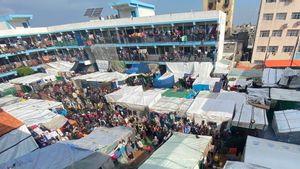The dengue fever outbreak that hit Argentina is expected to break previous records, reflecting broader concerns in South America, where warmer and wetter weather has led to a spike in cases.
So far, more than 120,000 cases have been recorded in Argentina in the 2023-2024 season, with most cases occurring in the last two months. This puts it well ahead of the previous season, which was the worst record.
"We are experiencing the largest dengue fever outbreak in Argentina," said Mariana MantecaACKa, director of Diagnostics and Investigations at the Malbran Institute and infectious disease specialist.
"There are 200 percent more cases than the same time last year's season," he continued.
There have been 79 deaths so far this season in Argentina, according to the government's latest figures.
In the first ten weeks of calendar year, there were about 103,000 cases of dengue fever, according to government data, ten times that of 8,343 cases recorded in the same period last year, when the main peak occurred in April.
Infectious disease specialist Eduardo Lopez, from Ricardo Gutierrez Hospital in Buenos Aires, said this season will almost certainly follow last year.
"With projections like this, we will surpass last year," he said.
"We still have time throughout April, the rest of March and at least 15 days in May. So we will surpass 130,000 cases. This year will be a record," he predicts.
The Pan Amerika Health Organization (PAHO) last month issued a warning about an increase in cases across the region, after last year recorded the highest number of cases in decades.
It is known, symptoms of dengue fever include high fever, headache, vomiting, skin rashes to very severe muscle and joint pain, causing this disease to be called "bone fracture" fever.
SEE ALSO:
In some cases it can cause more severe dengue fever, resulting in bleeding that can lead to death.
Most cases usually occur at the end of the summer in the southern hemisphere, namely from February to May, when the weather is often hot and humid. But this year a higher number of cases has been observed at the start of the season.
The English, Chinese, Japanese, Arabic, and French versions are automatically generated by the AI. So there may still be inaccuracies in translating, please always see Indonesian as our main language. (system supported by DigitalSiber.id)


















